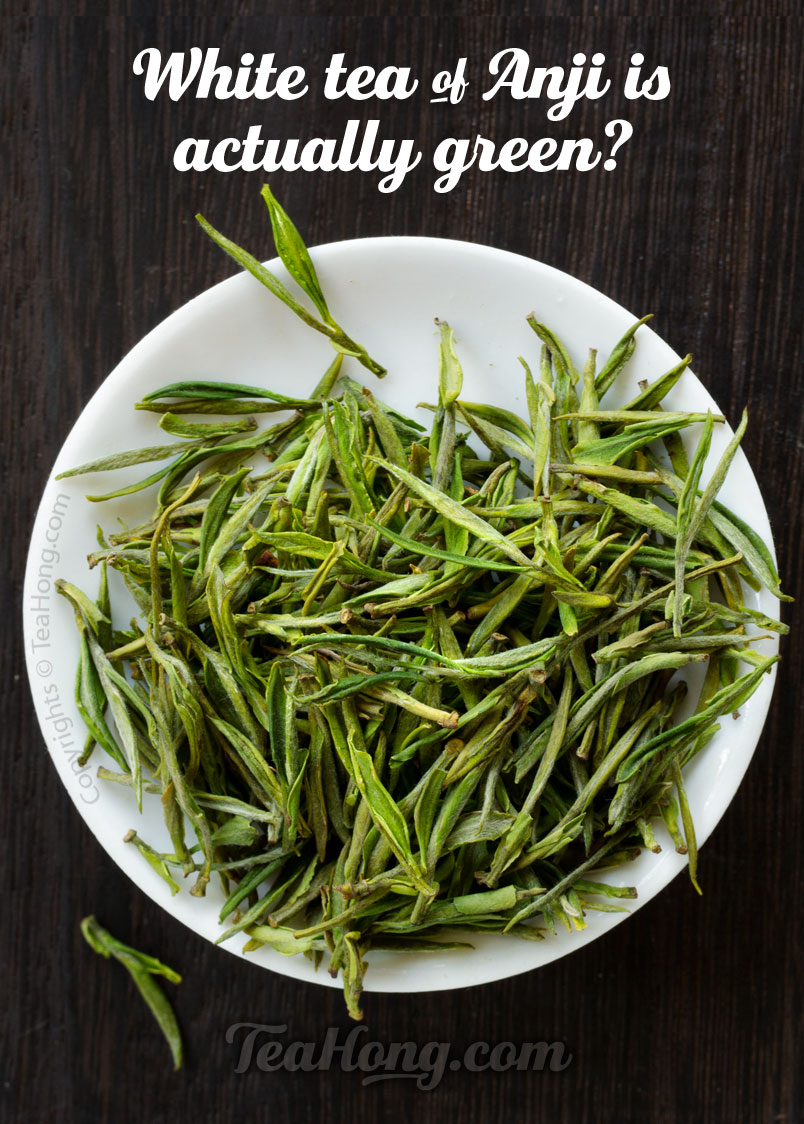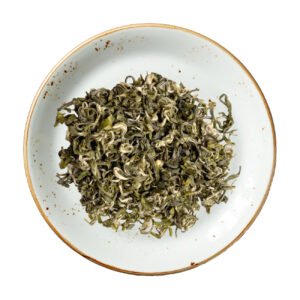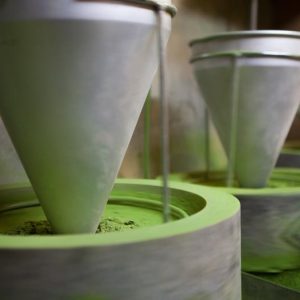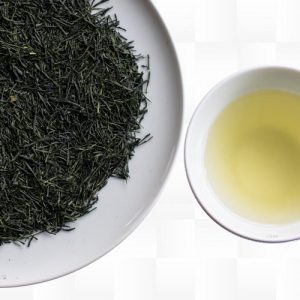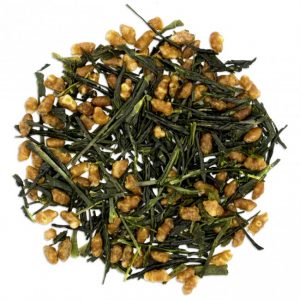Cultivar

The 700 yrs old Song cultivar and its “off-springs”. Layering is the most common form of asexual propagation in tea farming to maintain the characteristics of a cultivar. Wudong, Fenghuang
In reference to tea, a cultivar is a natural or cultivated strain of the tea plant (Camellia sinensis) chosen for production for certain characteristics that differentiate it from other strains. These characteristics may be reflected in the appearance of the plant, such as the visual character of the leaves, the natural attainable height, or the way the branches are naturally distributed, etc.
To the producer, the characteristics of a particular cultivar that deliver economic benefits maybe more important. These maybe leaves that can be processed to attain a certain flavour; or maybe the plant’s resistance to pests or weather; or faster growing rate such that there can be more yield, or earlier or later flushes such that the labour for tea-picking can be timed for better utilization, etc.
Cultivars of unique characters, particularly for yielding tea of unique flavours, were initially discovered in nature and propagated asexually to retain the uniqueness. That is because once sexual propagation occurs, the genetics of one strain of plant will be blended with another to form a new plant of different characters. The producer may not like that. Propagating tea asexually is also a lot more efficient and so all the more reason the preferred approach once the desired character of a tea plant is found or attained. Layering is the most popular method used in such asexual propagation.
The desired character of a cultivar can be cultivated through planned pollination, but grafting is the more popular approach in real production and researches. The genes of the “father” and “mother” plants each of its own desired characters are blended by either of these methods for a new cultivar.
Taxonomically, a certain tea cultivar can be expressed as species > variety / subvariety > cultivar. For example, the popular cultivar used in pu’er production, Menghai Da’ye can be expressed as Camellia sinensis variety assamica cultivar Menghai Da’ye. However, mostly people just say Menghai Da’ye.
There are thousands of natural and cultivated cultivars used in tea production in the world today. China employs by far the largest number of them. The range of cultivars enables the tea farmers in this country to yield the largest variety of tea of all categories.
The term “cultivar” is used in the following articles:
- “Raw” Puer or “Cooked” Puer?
- 3 Tea Recipes for the Festive Season
- A local farmer showing the dark leaves of a cultivar of the Yunn
- A special grade first flush Dinggu Dafang.
- A teashop in Guangzhou
- Another large leaf tea cultivar in Yunnan
- Any Health Benefits in the Tealeaves after First Infusion?
- Bailin Gongfu Black Tea
- Big black leaves of Pasha
- Black Tea: Between Teabag and Hand-rolled Whole-Leaves
- Black Tea: Origin & Production
- Black Tea: Tasting & Buying Tips
- Bouquet Style Phoenix Oolongs
- Bulang Shengcha Pu’er
- Caffeine Content in 39 Tea Samples
- Caffeine Content of Various Teas in Water Extract
- Caffeine: How Much is Safe?
- Camellia sinensis
- camellia sinensis, variety sinensis, sub-variety shuixian, culti
- camellia sinensis, variety sinensis, sub-variety shuixian, cultivar zhuye
- Categorization of Teas
- Classic Style Phoenix — Xingren Xiang Dancong
- Closeup of the young leaves of the original Tieguanyin cultivar
- Comparing two green teas that are quite oolong
- Cui Yu cultivar
- Dancong as a hangover tea, a special recipe
- Dianhong Golden, Yunnan’s Black Tea
- Dinggu Dafang, Oldest Flat-style Green Tea
- Eight Immortals
- First Flush
- First flush of a She-men cultivar from Wudong, Fenghuang shan Ph
- From Crude Provision to Treasure: Origin of Dark Tea
- From Shengcha to Shu Cha, a Microbial Change
- Fuding Semi-black: White Tea with a Twist
- Glossary of tea terms
- Golden Tieguanyin Black Tea
- Gongfu Infusion Chapter 2
- Gongfu Infusion: Chapter 2
- Grafting from a Song cultivar Huangzhi Xiang
- Green Tea Production: Baking
- Green Tea Production: Roasting
- Green Tea Production: Steaming
- Green Tea: Production
- How Fair is Fair Trade?
- Infused leaves of Red Plum Classic
- Infused leaves of Red Plum Classic
- Infused leaves: Wulong green tea, Four Season | Cuiyu
- Infused leaves: Wulong green tea, Four Season | Cuiyu
- Infused tealeaves: Vietnam generic oolong
- Is a Semi-fermented Tea an Oolong?
- Jasmine Pearls, Crafted for a Reason
- Jin Jun Mei, black tea
- Kaihua Longding, orchid style green tea
- Laos Shengcha
- Lapsang Souchong, The Original Version
- Leaf Shoot
- Leaf shoot of a tea plant
- Leaves of Xingren Xiang Dancong, a cultivar of Fenghuang Shuixia
- Longjing Changye, one of the major cultivars used in Longjing pr
- Luan Guapian, Big Leaf Green Tea
- Milan Xiang, Phoenix oolong
- Naming of a Tea
- New leaves
- New Leaves of the Xingren Xiang Cultivar
- Obscurantism: What Tea are you Really Buying?
- Oolongs: Minnan (Anxi) Varieties
- Oolongs: Phoenix Varieties
- Oolongs: Production
- Oolongs: Tea Plants & Major Regions
- Oolongs: the Gran Cru of Teas
- Oolongs: Wuyi Varieties
- Organic Spring Green Tea
- Organic Spring, Taiwan Wulong Green Tea
- Original Lapsang Souchong, black tea
- Phoenix Oolong: Classic Styles
- Phoenix Oolongs: Health & Buying tips
- Post-fermented Tea (dark tea)
- Pu’er: Myth of Origin & Reality of Blending
- Qimen Maofeng (Keemun Black Tea)
- Qingxin Green Tea
- Quality Basics 1: Various Plants, Various Qualities
- Quality Basics 3: The Myths of Grades
- Red Jade Hong Yu Black Tea
- Red Jade Hong Yu Black Tea
- Red Jade, The Fragrance of Taiwan
- Red Plum Classic: Tea of Heavenly Kingdom Revolt
- Renaissance of Dianhong Part 2: Competition
- Rougui, the Wuyi oolong before Shuixian
- Selected Bibliography
- Shiguping Wulong
- Shiguping Wulong, Phoenix oolong
- Silver Needle, white tea
- Silver Needle, white tea
- Silver Needle, white tea
- Silver Needles, the First White Tea
- Song Cultivar Huangzhi Xiang Dancong
- Song Cultivar Huangzhi Xiang Dancong, Phoenix oolong
- Spring flush ( ie first flush ) yong leaves of Wuyi Rougui
- Stallion in Gold, Tieguanyin Turns Red
- Tanyang Gongfu Black Tea
- Tea and Your Health: an Orientation
- Tea Farm with Red Jade cultivars
- Tea farmer with trophy
- Tea from the Himalayas: Nepali Black
- Tea Hong Red Jade
- Tea Hong: some selections from Tea Hong line of fine teas
- Tea polyphenols content, at 42 days of post fermentation by various strains of microbes
- Tea Polyphenols: Tastes and Tea Choices
- The 700 yrs old Song cultivar and its “off-springs”
- The Large, Beautiful Green Leaves of Taiping Houkui
- The Nature of Green Teas
- The unique looking Hong Yu teaplant — Red Jade black tea produ
- Tieguanyin, the Quintessential Minnan Oolong
- Traditional Oolong Production: A Showcase
- Two leaves each from a different tea cultivar
- Uji Gyokuro, Classic Representation of Japanese Green Tea
- Uva Green, in the Gongfu Spirit
- What is Orange Pekoe?
- What Really is a White Tea?
- Which Tea has the Most Catechins?
- White Peony, Real White Tea
- White Peony, white tea, matured for 8 years
- White Peony, white tea, special grade, matured for 1 year
- White Tea: Health & Buying tips
- Wild tea maocha, Laos
- Wild tea tree leaves in Yunnan
- Wulong
- Wuyi Aijiao Wulong
- Wuyi Meizhan
- Wuyi Oolongs: Tasting, Health & Buying Tips
- Xiaozhong, or Souchong, Gongfu Black Tea from Bailin
- Yancha Shuixian, Wuyi oolong
- Yunwu, Cloud & Mist Green Tea
- Zhenghe Golden Gongfu, black tea

